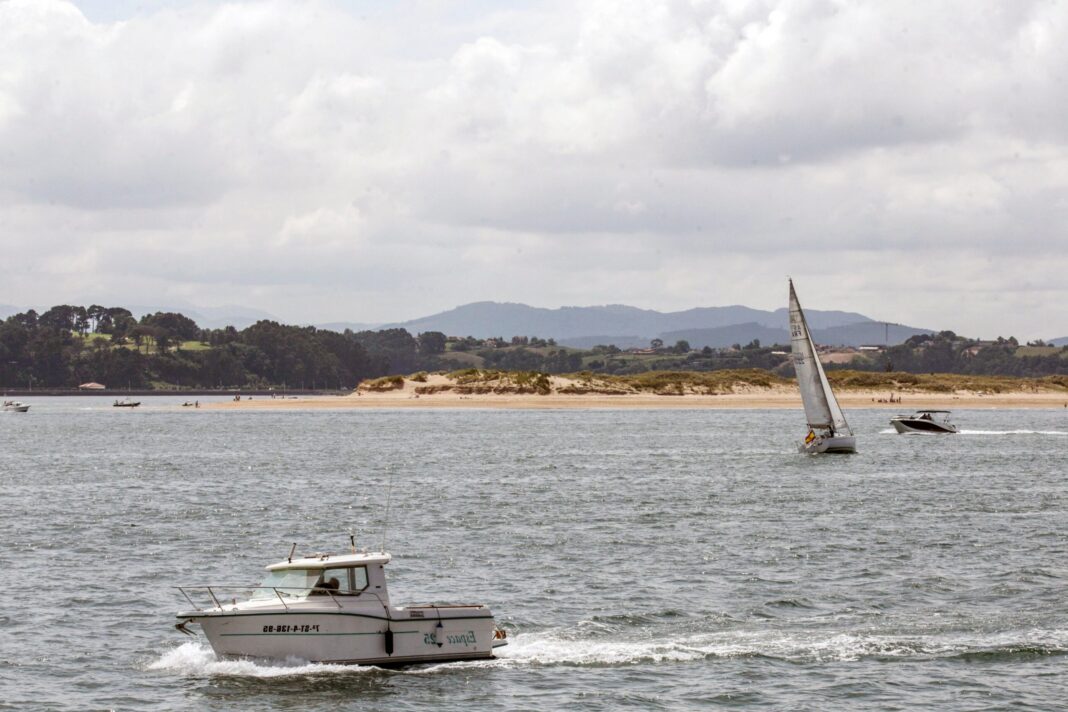BTN News: The Puntal de Somo Beach in Cantabria, a breathtaking natural treasure, has been enduring the consequences of erosion for years, leading to a complex environmental challenge that threatens not only the landscape but also the local economy. This picturesque stretch of sand, just a few hundred meters from Santander, faces a multifaceted dilemma. From the irreversible loss of seashells due to beachgoers, who collect them as souvenirs, to the disruption of tranquility by summer parties and the looming impact of climate change, the Puntal’s future hangs in the balance. The most pressing concern comes from studies by the Institute of Hydraulics of Cantabria (IH), which warn that by 2050, the Puntal might break apart, causing significant environmental and economic upheaval. The potential disruption could affect key sectors like the Santander Port, which accounts for 15% of Cantabria’s GDP, as well as fishing, shellfishing, and tourism activities like surfing. A coordinated effort known as the “Plan Bahía” has been initiated to address these issues, requiring all stakeholders to set aside their individual interests and focus on the collective good.
The alarm was first raised in 2017 when the IH began a detailed study of the Puntal’s situation. Raúl Medina, the director general of the IH, offered a striking comparison that underscores the dramatic changes over the past few decades. In 1972, the mooring point for boats was located at the very tip of the Puntal; today, there are over 500 meters of sand extending beyond that point. During the 1990s, the Puntal was growing by 13 meters in length annually, while on the opposite side, Loredo Beach was losing two meters of width each year. Although this rate of change has stabilized somewhat due to strategic sand dredging, the underlying issues remain. The dredging has been critical in managing the sand distribution and slowing the erosion process, but Medina stresses that natural systems will always seek a new equilibrium when disturbed. Initially, these adjustments occur rapidly, but over time, they become less predictable, especially with the increasing frequency of extreme weather events exacerbated by climate change.
Medina also points to human activity as a significant factor in the Puntal’s current predicament. Over a century ago, the marshlands around the bay were gradually occupied, with areas converted for agricultural use or developed into urban spaces, including the construction of El Corte Inglés, the airport, and residential buildings. These alterations have left the marshlands vulnerable to occasional flooding, a stark reminder of their original, waterlogged state. According to Medina, one possible solution to the Puntal’s erosion could involve restoring these marshes to their natural state, although such an endeavor would require extensive cooperation from all stakeholders.
In response to these concerns, the Mesa de la Bahía was established in 2019, bringing together a diverse group of entities, including the regional government, local municipalities, and the national ministry’s coastal area, to develop a unified approach. This collaboration resulted in the Plan Bahía, which aims to balance the environmental and socio-economic needs of the bay. As Medina warns, inaction is itself a form of action, and the consequences of not intervening could be devastating, affecting everyone equally if the Puntal were to break.
María Merino, a researcher and co-author of the Plan Bahía, highlights the role of climate change in accelerating the erosion process. The rising sea levels intensify erosion, increasing the likelihood that the Puntal could be severed by a water channel, transforming its tip into an isolated island. Merino emphasizes the importance of restoring and expanding the bay’s natural features, such as the marshlands, which could help extend the Puntal and mitigate the impact of erosion. She is optimistic about the agreements reached among political and economic stakeholders, though she acknowledges that those without direct decision-making power but with significant influence, like local economic sectors, must also take responsibility to protect this valuable natural asset.
Roberto Media, Cantabria’s Minister of Public Works, concurs with the assessment that marine dynamics are eroding Somo Beach. He stresses the urgency of implementing measures to prevent the Puntal from becoming separated from the mainland. Media praises the IH’s work and underscores the economic significance of the bay, particularly for the Santander Port, which is a vital economic engine for the region, generating 15% of Cantabria’s GDP. While Media does not foresee an imminent collapse of the Puntal, he warns that without continued sand dredging and other interventions, the channel could become clogged, or the Puntal could eventually break.
The erosion of the Puntal has also had a noticeable impact on local fisheries. Shellfish harvesters and fishing cooperative managers from nearby municipalities like Pedreña and Camargo report a significant decline in marine life, which has affected local seafood restaurants. Species such as clams, razor clams, spider crabs, shrimp, and squid have become increasingly scarce, leading to reduced catches and economic difficulties for those who depend on these resources.
The surfing community, which is closely connected to the bay’s tides and marine dynamics, has also observed the changes. The Cantabrian Surf School, founded in Somo in 1991 and a pioneer in Spain, has witnessed the beach’s retreat firsthand. David García, one of the school’s partners, recalls a large rock that used to be buried in sand along the path between Loredo and Somo, which is now exposed and can be climbed. The retreat of the dunes has been slowed somewhat by sand dredging from the Puntal, which has helped to stabilize the situation, but the long-term trends remain a cause for concern.
Despite the challenges, García remains hopeful that the resources and human effort dedicated to the Plan Bahía will ultimately prevail. He acknowledges the deep connection that locals have to the bay’s natural beauty and the widespread support for preserving it. As he puts it, “Santander has one of the most beautiful bays in the world, and it’s important to maintain it. No one with any sense is against that.”


